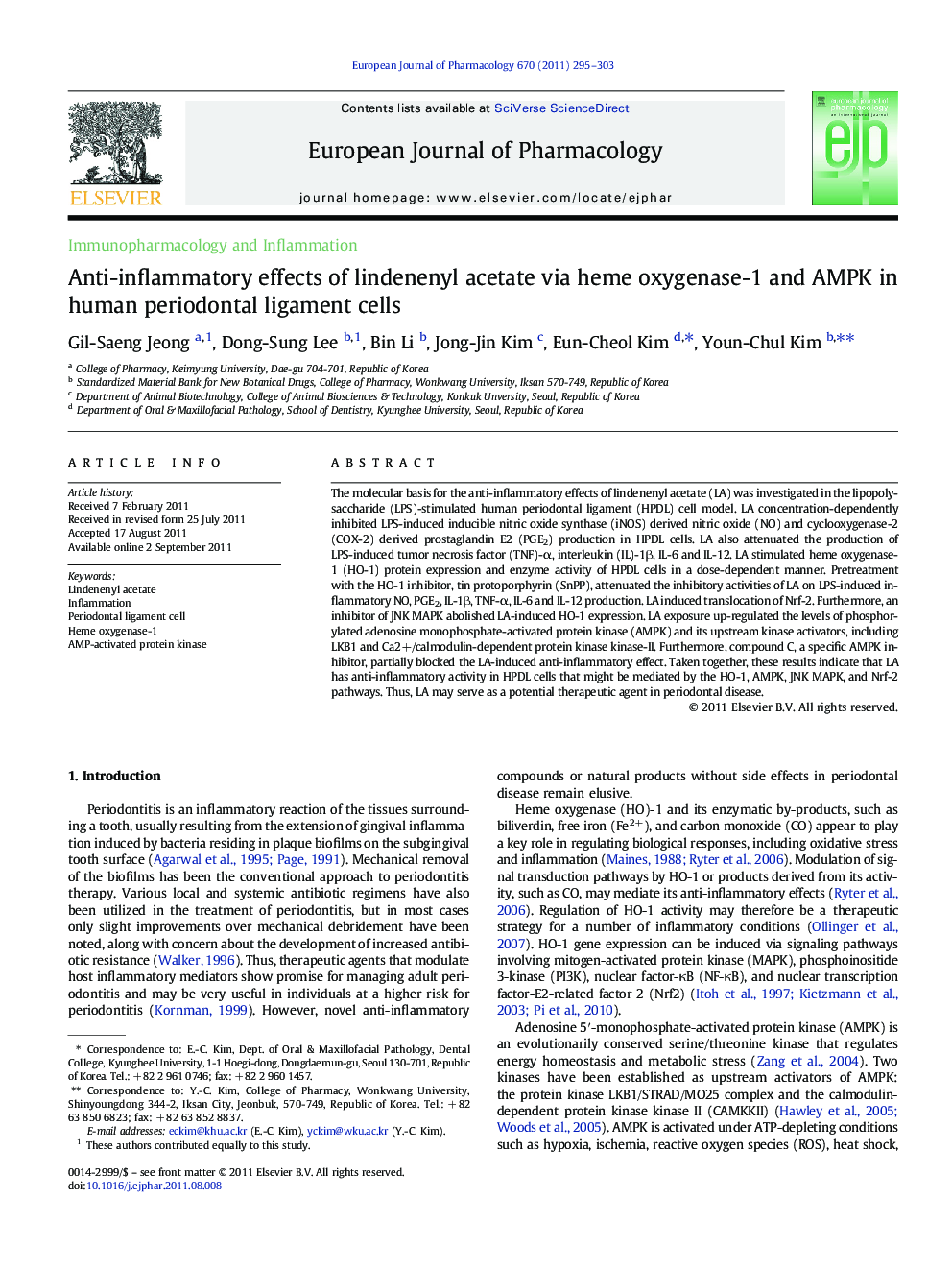| Article ID | Journal | Published Year | Pages | File Type |
|---|---|---|---|---|
| 5830261 | European Journal of Pharmacology | 2011 | 9 Pages |
Abstract
The molecular basis for the anti-inflammatory effects of lindenenyl acetate (LA) was investigated in the lipopolysaccharide (LPS)-stimulated human periodontal ligament (HPDL) cell model. LA concentration-dependently inhibited LPS-induced inducible nitric oxide synthase (iNOS) derived nitric oxide (NO) and cyclooxygenase-2 (COX-2) derived prostaglandin E2 (PGE2) production in HPDL cells. LA also attenuated the production of LPS-induced tumor necrosis factor (TNF)-α, interleukin (IL)-1β, IL-6 and IL-12. LA stimulated heme oxygenase-1 (HO-1) protein expression and enzyme activity of HPDL cells in a dose-dependent manner. Pretreatment with the HO-1 inhibitor, tin protoporphyrin (SnPP), attenuated the inhibitory activities of LA on LPS-induced inflammatory NO, PGE2, IL-1β, TNF-α, IL-6 and IL-12 production. LA induced translocation of Nrf-2. Furthermore, an inhibitor of JNK MAPK abolished LA-induced HO-1 expression. LA exposure up-regulated the levels of phosphorylated adenosine monophosphate-activated protein kinase (AMPK) and its upstream kinase activators, including LKB1 and Ca2+/calmodulin-dependent protein kinase kinase-II. Furthermore, compound C, a specific AMPK inhibitor, partially blocked the LA-induced anti-inflammatory effect. Taken together, these results indicate that LA has anti-inflammatory activity in HPDL cells that might be mediated by the HO-1, AMPK, JNK MAPK, and Nrf-2 pathways. Thus, LA may serve as a potential therapeutic agent in periodontal disease.
Related Topics
Life Sciences
Neuroscience
Cellular and Molecular Neuroscience
Authors
Gil-Saeng Jeong, Dong-Sung Lee, Bin Li, Jong-Jin Kim, Eun-Cheol Kim, Youn-Chul Kim,
